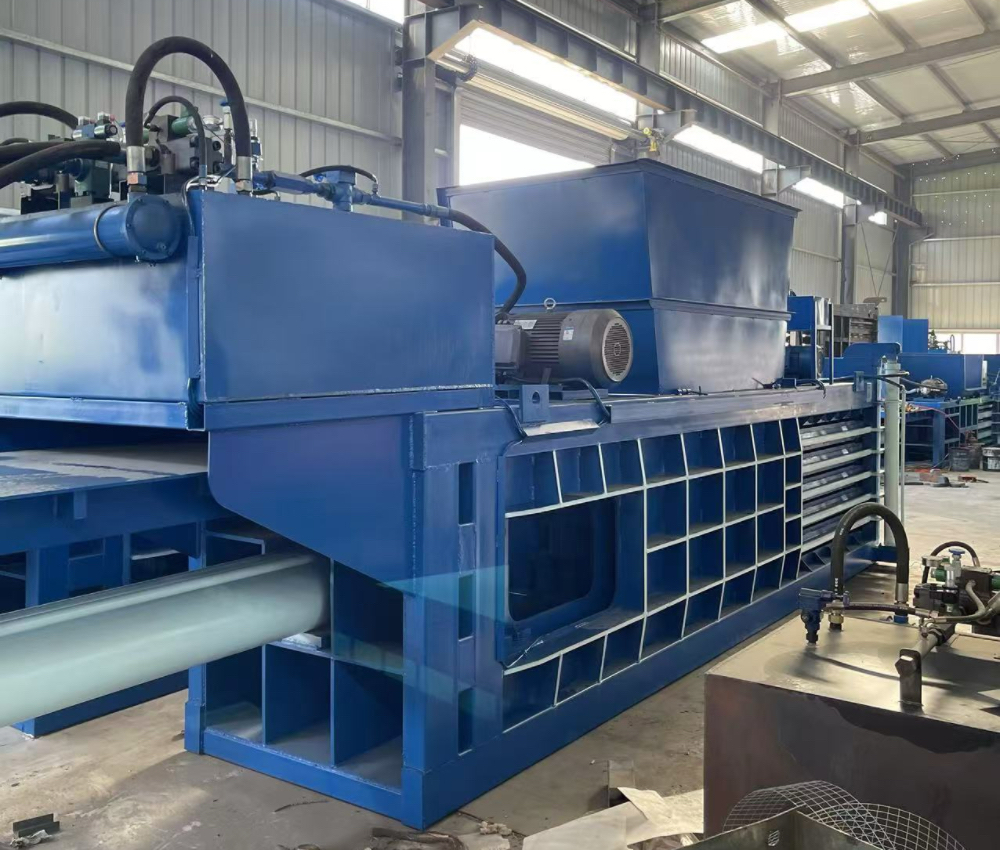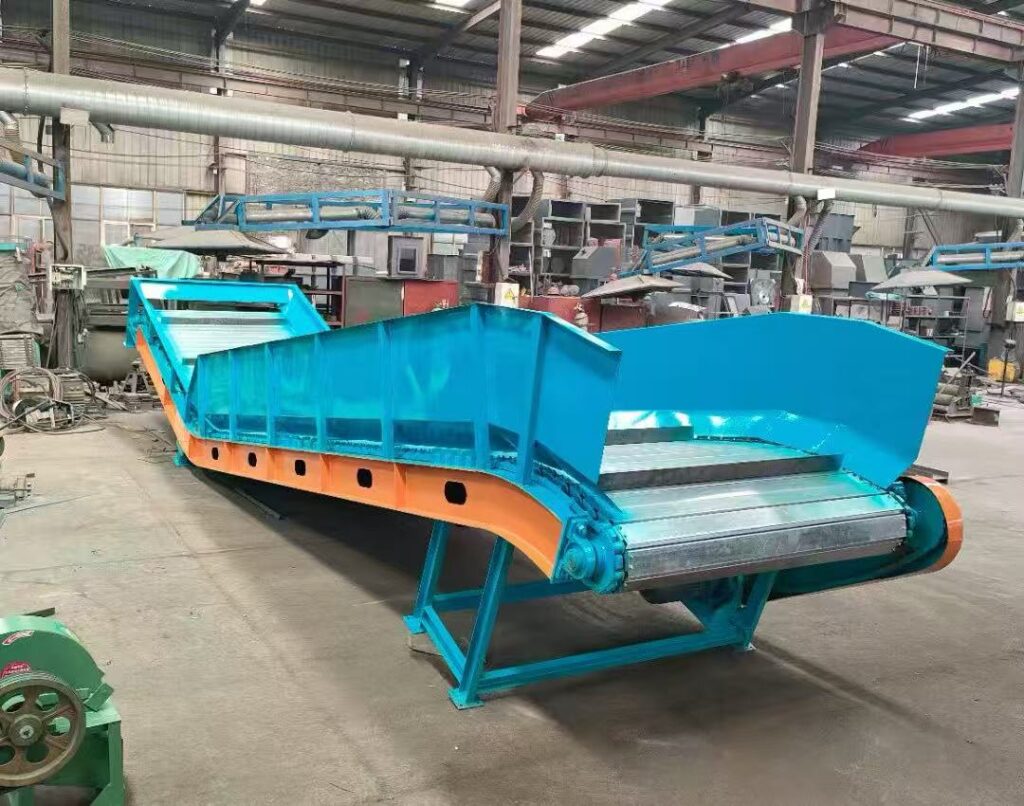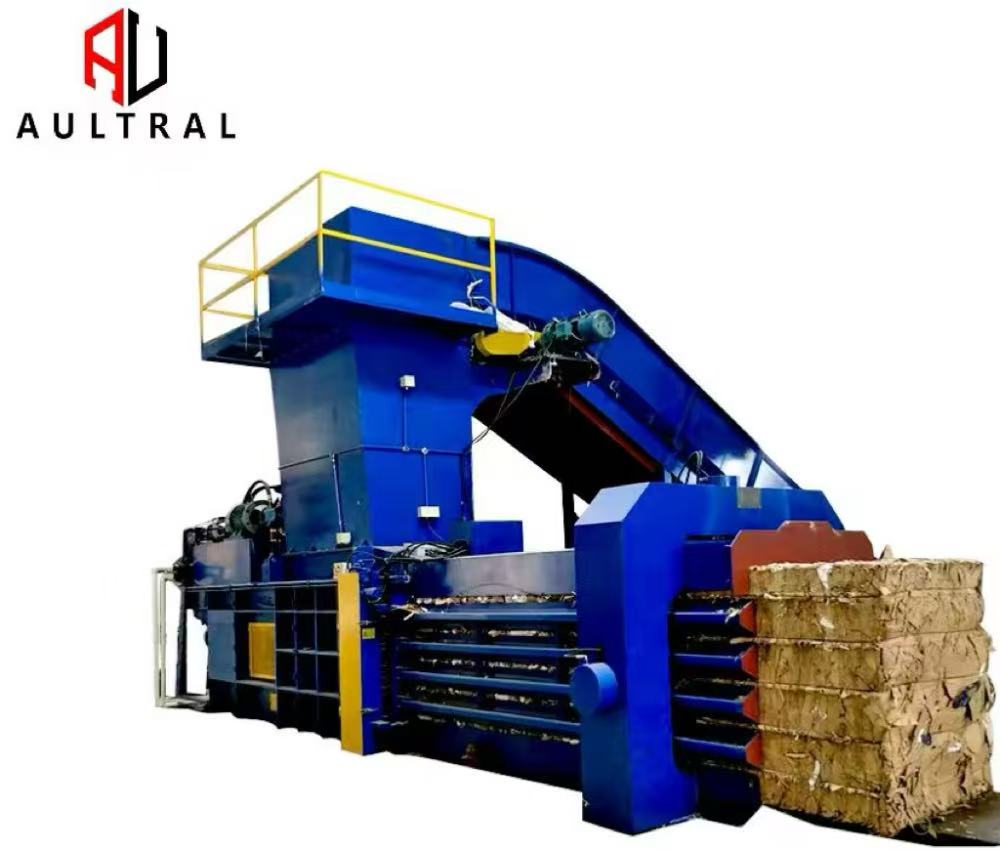What Is A Horizontal Cardboard Baler Machine?

A horizontal cardboard baler machine is a powerful recycling solution designed to compress large volumes of cardboard and paper waste into dense, manageable bales. Unlike vertical balers, which are typically smaller and manually operated, horizontal balers are larger, more automated, and capable of handling high quantities of recyclable material.
These machines are commonly used in warehouses, recycling centers, logistics companies, supermarkets, and manufacturing facilities where cardboard waste is produced in bulk. By compacting cardboard into uniform bales, they reduce storage space, simplify transportation, and improve recycling efficiency.
Why Businesses Need A Horizontal Cardboard Baler Machine?

Save Space And Improve Efficiency
Cardboard waste often takes up significant storage space. A horizontal baler compresses bulky materials into compact bales, freeing up valuable floor space for operations.
Reduce Waste Handling Costs
Transporting loose cardboard is costly. By compacting it into dense bales, businesses can lower transportation costs and reduce the number of waste collection trips required.
Generate Additional Revenue
Recycled cardboard bales can be sold to paper mills and recycling companies. With a horizontal baler, businesses can turn waste into profit by supplying high-quality recyclable materials.
Enhance Workplace Safety
Loose cardboard scattered around a facility creates clutter and fire hazards. By baling cardboard, companies maintain a clean, organized, and safer work environment.
Support Sustainability Goals
More organizations are focusing on eco-friendly practices. A horizontal cardboard baler machine helps companies meet environmental regulations, reduce landfill waste, and promote a green corporate image.
How To Use A Horizontal Cardboard Baler Machine

Step 1: Prepare The Machine
Ensure the baler is installed correctly and powered on. Check that all safety guards and emergency stop features are working before use.
Step 2: Load The Cardboard
Place cardboard into the baler’s hopper. Automatic feeding systems can also be integrated for high-volume operations.
Step 3: Start The Compression Cycle
Once loaded, the machine uses hydraulic power to compress the cardboard. Modern horizontal balers offer different compression modes for optimal bale density.
Step 4: Tie And Eject The Bale
After compression, strong wire ties or plastic strapping secure the bale. The finished bale is then ejected automatically for easy removal.
Step 5: Store Or Transport The Bales
The compact, uniform bales can be stacked, stored, or transported directly to recycling facilities.
Types Of Horizontal Cardboard Balers
Semi-Automatic Horizontal Balers
These require manual feeding and tying of bales but are cost-effective for medium-volume operations.
Fully Automatic Horizontal Balers
Equipped with conveyor feeding, auto-tying, and bale ejection systems, these machines are ideal for large-scale industrial recycling.
Closed-End Horizontal Balers
Best for smaller spaces, these machines produce smaller, denser bales. They are suitable for businesses with moderate waste volumes.
Open-End Horizontal Balers
Designed for continuous operation, these balers are efficient for facilities generating massive cardboard waste daily.
Buying Guide: How To Choose The Right Horizontal Cardboard Baler
Assess Your Waste Volume
Estimate how much cardboard waste your facility produces daily or weekly. High-volume operations benefit from fully automatic balers, while medium-sized businesses may choose semi-automatic models.
Consider Bale Size And Density
Larger bales reduce handling frequency, but smaller, denser bales may suit limited storage spaces. Choose bale dimensions that align with your transportation and recycling needs.
Evaluate Available Space
Horizontal balers require more floor space than vertical models. Measure your facility to ensure the baler fits without disrupting workflow.
Look At Automation Features
If labor cost and efficiency are priorities, select a baler with automatic feeding, tying, and ejection functions. These reduce manual work and increase productivity.
Check Power And Hydraulic Strength
Strong motors and reliable hydraulic systems ensure the machine handles continuous, heavy-duty operation.
Compare Maintenance And Safety Features
Easy-to-maintain designs with built-in safety systems, such as emergency stops and overload protection, minimize downtime and protect workers.
Analyze Long-Term ROI
Consider not only the purchase cost but also the savings in labor, storage, transportation, and revenue from selling recycled bales.
Key Features To Consider Before Buying
-
Bale Size And Weight Capacity – Choose based on your recycling output.
-
Automation Level – Decide between semi-automatic and fully automatic models.
-
Power And Hydraulic System – Strong motors and hydraulics ensure efficiency.
-
Durability And Build Quality – Look for robust steel construction for long service life.
-
Maintenance And Safety Features – Easy servicing and advanced safety systems reduce downtime.
Advantages Of Using A Horizontal Cardboard Baler Machine
-
Maximizes recycling efficiency.
-
Reduces labor costs with automation.
-
Produces uniform, high-density bales for transport.
-
Increases workplace safety and cleanliness.
-
Meets compliance with recycling and waste management regulations.
Common Applications Of Horizontal Cardboard Balers
-
Recycling Plants – Handling large quantities of cardboard waste daily.
-
Supermarkets And Retail Chains – Managing packaging waste from products.
-
Logistics And Distribution Centers – Compressing cardboard from shipping boxes.
-
Manufacturing Facilities – Reducing waste from raw material packaging.
-
Warehouses – Keeping storage spaces clear and organized.
Tips For Safe And Effective Operation
-
Train staff on proper baler operation.
-
Always wear protective gloves and safety equipment.
-
Never overload the hopper.
-
Regularly inspect hydraulic systems for leaks.
-
Perform scheduled maintenance to extend machine life.
Future Trends And Industry Insights
The demand for horizontal cardboard baler machines is expected to rise steadily as businesses focus more on sustainability and cost efficiency. Recycling regulations are becoming stricter worldwide, pushing companies to adopt advanced waste management equipment. Modern balers are now being developed with smart control systems, enabling operators to monitor performance, detect issues early, and optimize energy use.
Automation is also a major trend. Fully automatic horizontal balers with conveyor feeding and auto-tying systems are increasingly popular in high-volume industries. These machines reduce dependency on manual labor while delivering consistent bale quality. Another development is energy-efficient hydraulic systems, which lower operating costs and reduce environmental impact.
In addition, customization is becoming important. Businesses from different industries have unique requirements, such as bale size, density, and material type. Manufacturers now offer tailored solutions to meet specific needs, from compact balers for retail stores to heavy-duty models for recycling plants.
Overall, the industry is moving toward smarter, greener, and more efficient machines. Companies that invest in advanced baling technology today will benefit from long-term savings, higher productivity, and stronger environmental compliance in the future.
Conclusion – A Smart Investment For Waste Recycling
A horizontal cardboard baler machine is not just an industrial tool; it is a smart investment in efficiency, safety, and sustainability. By turning bulky cardboard waste into valuable recyclable bales, businesses save money, optimize operations, and support eco-friendly initiatives. Whether you operate a large warehouse, a retail chain, or a recycling facility, investing in a horizontal baler can transform the way you handle cardboard waste.
